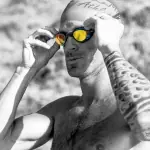Efficiency is the name of the game for triathletes: How can you yield the greatest return on your time investment spread across swimming, biking, running, nutrition, recovery, etc.? Navigating the trial and error of developing a winning training formula can become exhausting and all consuming.
A once clear vision of why you’re racing triathlons frequently becomes lost in the process.
What motivates you to get up and crank out your early morning workouts when your friends are home, comfortable in bed? Are you still having fun?
These important questions require definitive answers, as triathlon is about 99 percent training and 1 percent racing. As such, creating a positive training environment is essential to your happiness, as well as the happiness of your family and friends around you.
Set an Incentive
Instead of falling victim to simply going through the motions of training, find ways to make sessions fun and something you look forward to. Think back to when you were a kid and your teacher advertised a pizza party for the whole class if you completed a specific goal. The incentive may have changed from a pizza party to having a beer after your session, but the motivation remains the same. Much of triathlon is about deprivation, but you’re much more likely to accomplish the task (your workout) with focus and excitement knowing there is a reward at the other end.
Create Stepping Stones
Your IRONMAN is 274 days away. With 300 workouts to go, the road ahead is a bit daunting. Consider breaking up your training blocks into bite-sized pieces to make each week a bit more palatable.
For example, focus on the week coming up, specific goals you have for yourself and how you can execute given the workload you have. If you check off each of your workouts and mini-goals, again—reward yourself. Stringing together successful weeks in a row will always feel less intimidating than taking a macro view of all of the brutal workouts to come.
Connect with Community
You’re part of a distinct niche of adults who choose to spend free time grinding and testing physical limits. Find some like-minded folks to share the pain with! Not only will this serve as accountability during some of your less desirable training sessions, but will allow for a social outlet to keep things playful. Plus, a little friendly competition can make workouts more fun and push you outside your comfort zone.
If there isn’t an open water swim group near you, start your own.
"You’re part of a distinct niche of adults who choose to spend free time grinding and testing physical limits."Post your meet-up group on social media and encourage them to bring their friends, too. Take turns bringing coffee or snacks for post-workout conversation and relaxation. Again, this incentive will push you through your workout and give purpose to the prescribed pain your coach dished out.
Find the Right Fit
Your coach is your first line of defense. Are they encouraging you to stay true to your goals while maintaining the life balance you need? Be sure your coach shares your perspective on sport. Being treated like a pro can certainly be an ego boost, but unless qualifying for your pro card is your end goal, this rigid approach to training can quickly take away the fun.
Sometimes you miss a workout, or sometimes you’re simply off; in those situations, your coach should act as a support system, highlighting your accomplishments and how far you’ve come. Even if you don’t have a formal coach, be sure to lean on people whom you trust that will both support and encourage you when motivation is lacking.



